If you're a fan of flavored oils and gourmet condiments, then you need to make this easy Chive Oil! It's so fresh, vibrant, flavorful, and beautiful! Pour this chive oil over your salads, on your main dish, stir it into mashed potatoes, and use it in so many other ways.

Jump to:
How to use chive oil
Homemade chive oil is delicious, easy to make, and so much more budget-friendly than buying expensive infused oils. But how do you use chive oil?? Here are some ideas:
- In salad dressings. Just replace some of the oil in a vinaigrette with a splash of chive oil.
- Simply drizzled on top of a salad with a little bit of red wine vinegar or balsamic, and salt, in place of dressing.
- Over chicken or salmon.
- Spread on sandwiches.
- Stir it into mashed potatoes.
- Add it to pesto or chimichurri sauce.
- Drizzle it on pizza.
- In marinades. Add it in place of oil in your favorite marinade to add fresh chive flavor.
- Spread on a baguette and then toast it or pan-fry the baguette to toast it. I recommend adding a pinch of flaky sea salt or some fresh shaved Parmesan to serve, or dipping into fresh hummus or another dip, such as roasted red pepper dip.
- Drizzled into a pureed soup (such as carrot soup or butternut squash lentil soup) right before serving.
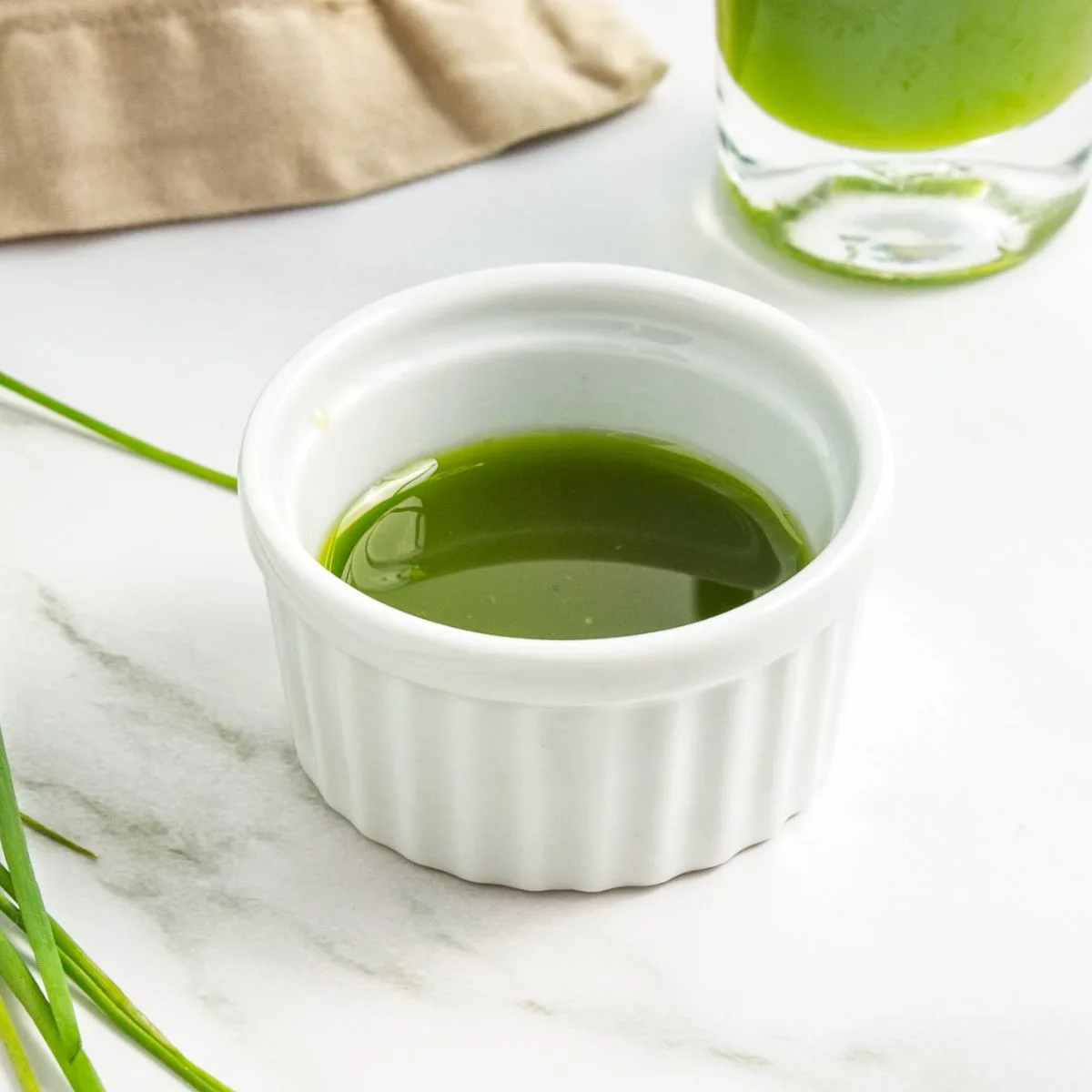
3 ingredient chive oil
Just fresh chives, olive oil, and a bit of salt are all you need to make this flavored oil. I've played around with this recipe quite a bit, trying to find the perfect balance of minimal prep but maximum flavor and vibrant color.
The resulting recipe has a few steps, but it's so worth it:
- Blanch the chives in salt water to soften them and brighten them.
- Blend the chives with oil and let them sit for a while to infuse the flavor.
- Strain the mixture through a fine mesh strainer to remove any chunky solids so all you have it smooth, delicious chive infused oil.
Oh, and if you like the idea of infusing herbs into your oil, then you will LOVE my air fryer garlic confit, garlic confit butter (using that same garlic confit), pesto butter (made with fresh pesto), and garlic scape butter recipes.
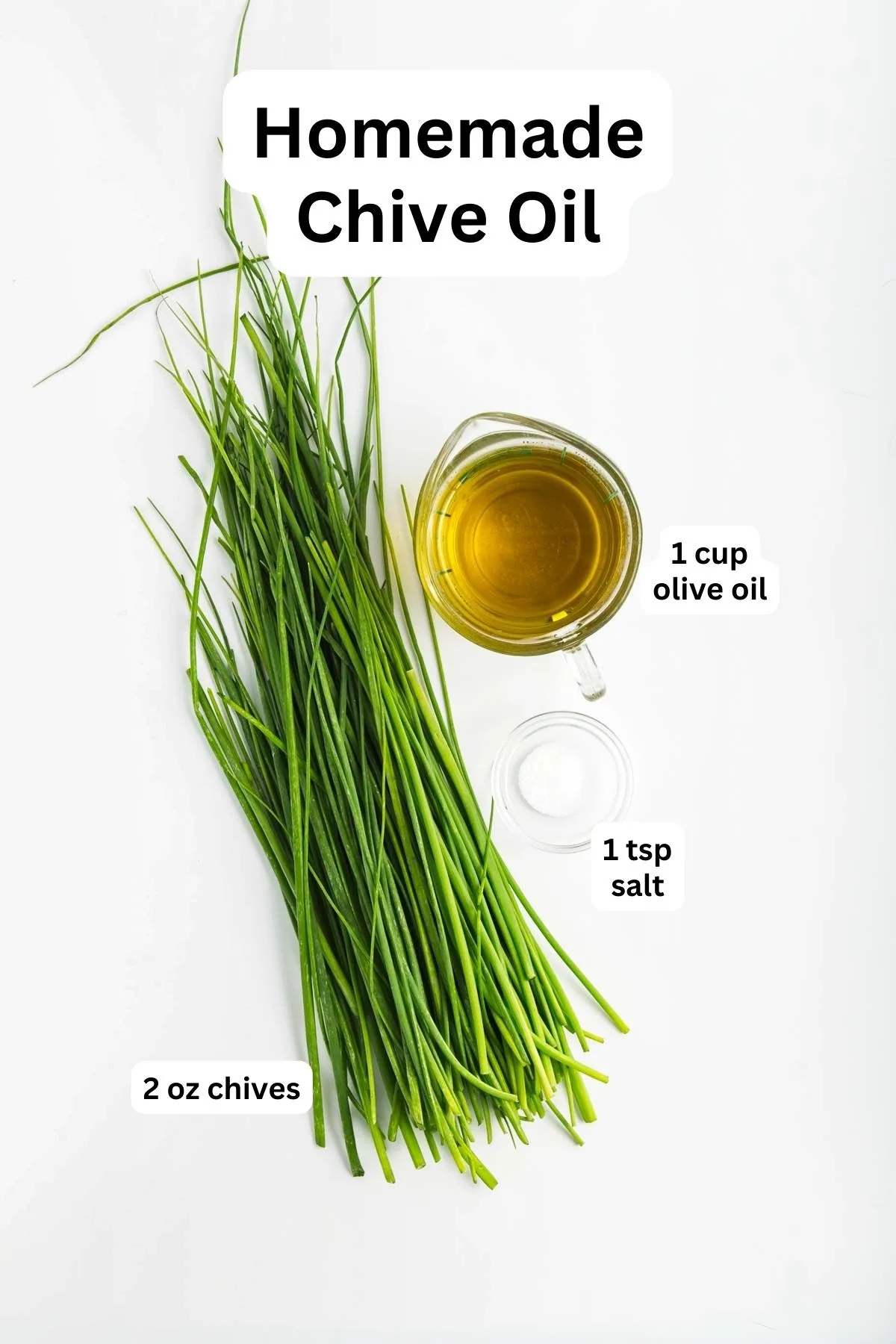
Ingredients
- 2 oz fresh chives (about 3-4 small bunches if buying those fancy plastic-wrapped packages from the herb section of the store)
- 1 cup olive oil
- 3-4 cups water (for blanching the chives)
- 1 teaspoon salt
Equipment
- Blender
- Small or medium saucepan - to blanch the chives
- Ice bath - a bowl with ice and cold water to dunk the chives into after blanching them
- Wooden spoon or any other spoon or spatula - to stir the chives in the boiling water
- Colander - to strain the water from the blanched chives
- Paper towels or a clean kitchen towel - to dry the chives
- Fine mesh strainer - to strain the oil (or you can use a cheesecloth instead)
Instructions
Rinse chives well. If you want, you can cut them in half or thirds to make them fit in a pot better.
In a medium pot, bring 4 cups of water and 1 teaspoon salt to a boil. While the water is heating up, prepare your ice bath and get your colander ready.
Add chives to the boiling water for 10 seconds, stirring immediately. Be careful not to overcook them!
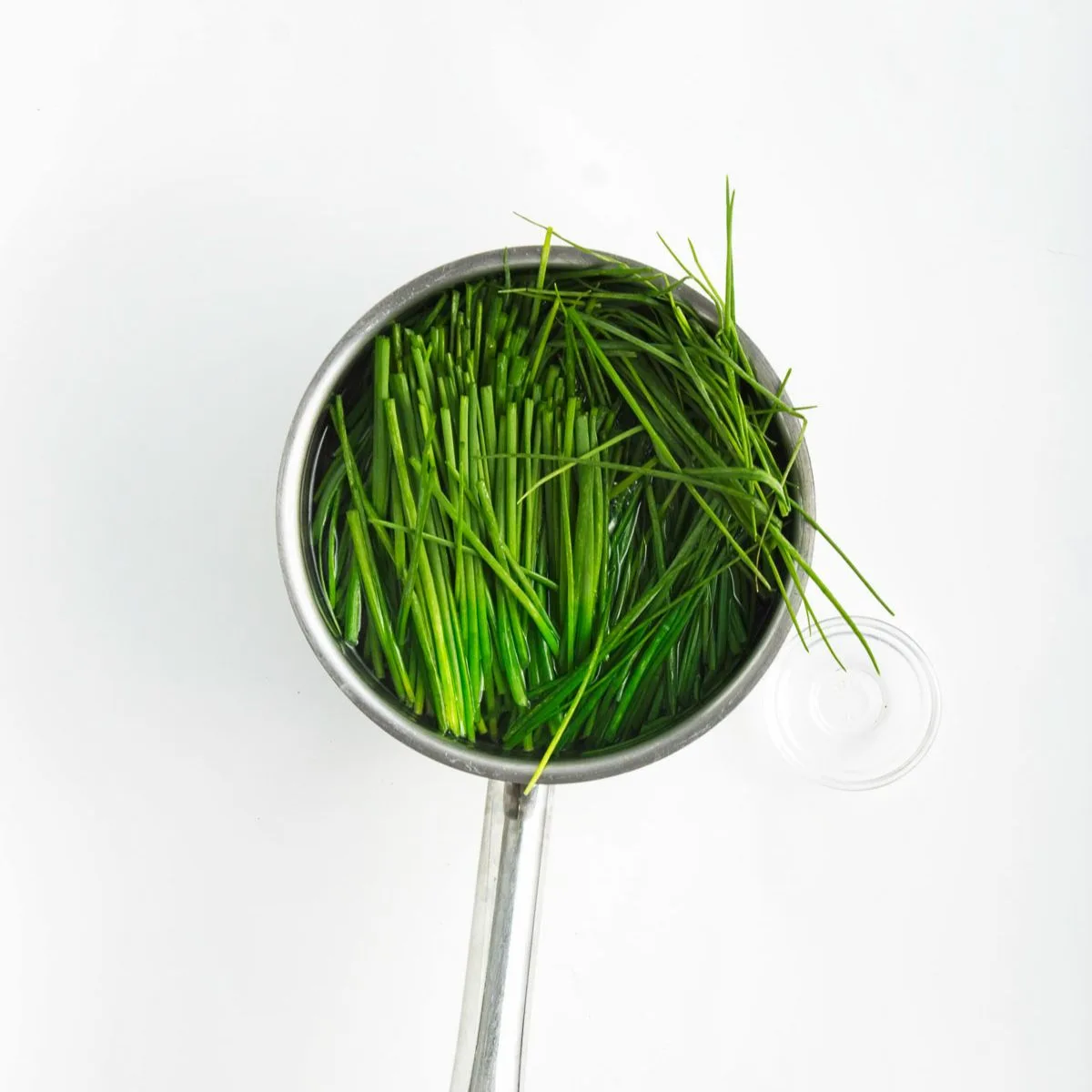
Immediately drain the chives in a colander and plunge them into the ice bath.
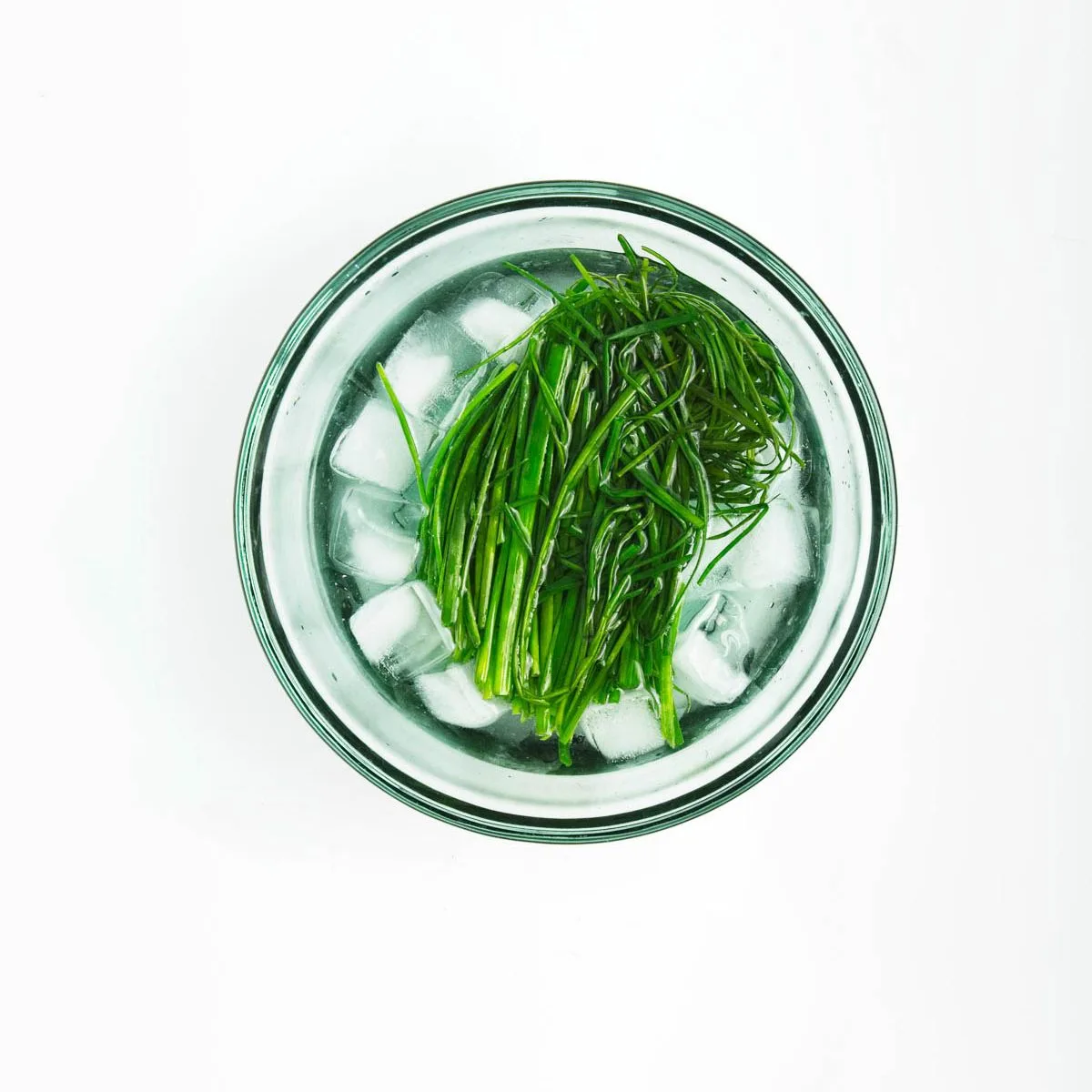
Remove the chives from the water and gently squeeze to remove most of the water. Drain on paper towels and press further until as much of the water is removed as possible. If you have time, let them sit out for a bit to air dry until they're not soaking wet.
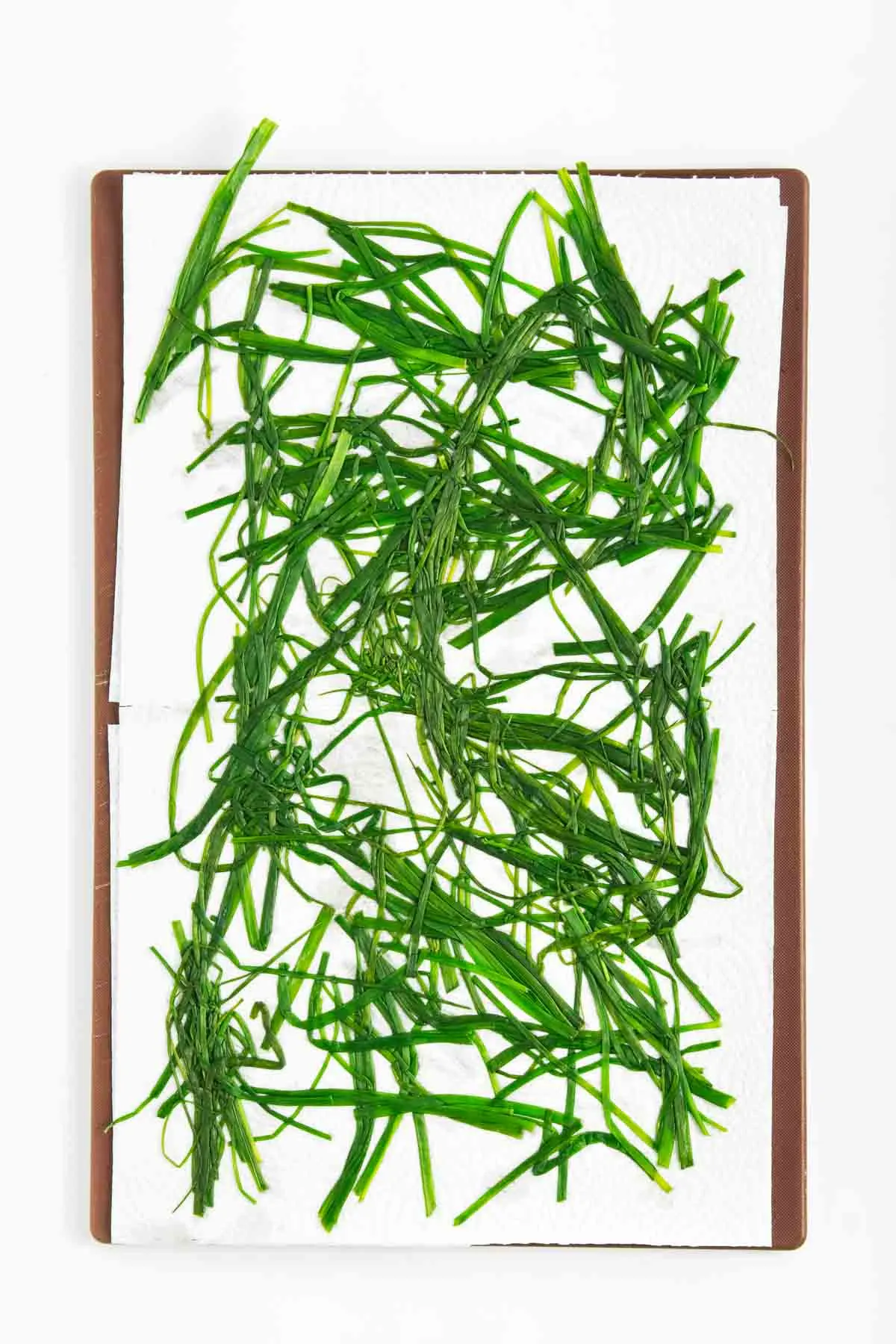
Add the oil and chives to a blender (it can be helpful to chop up the chives into smaller pieces for less powerful blenders). Blend on medium speed until chives are starting to break up. Increase speed until chives are mostly pulverized.
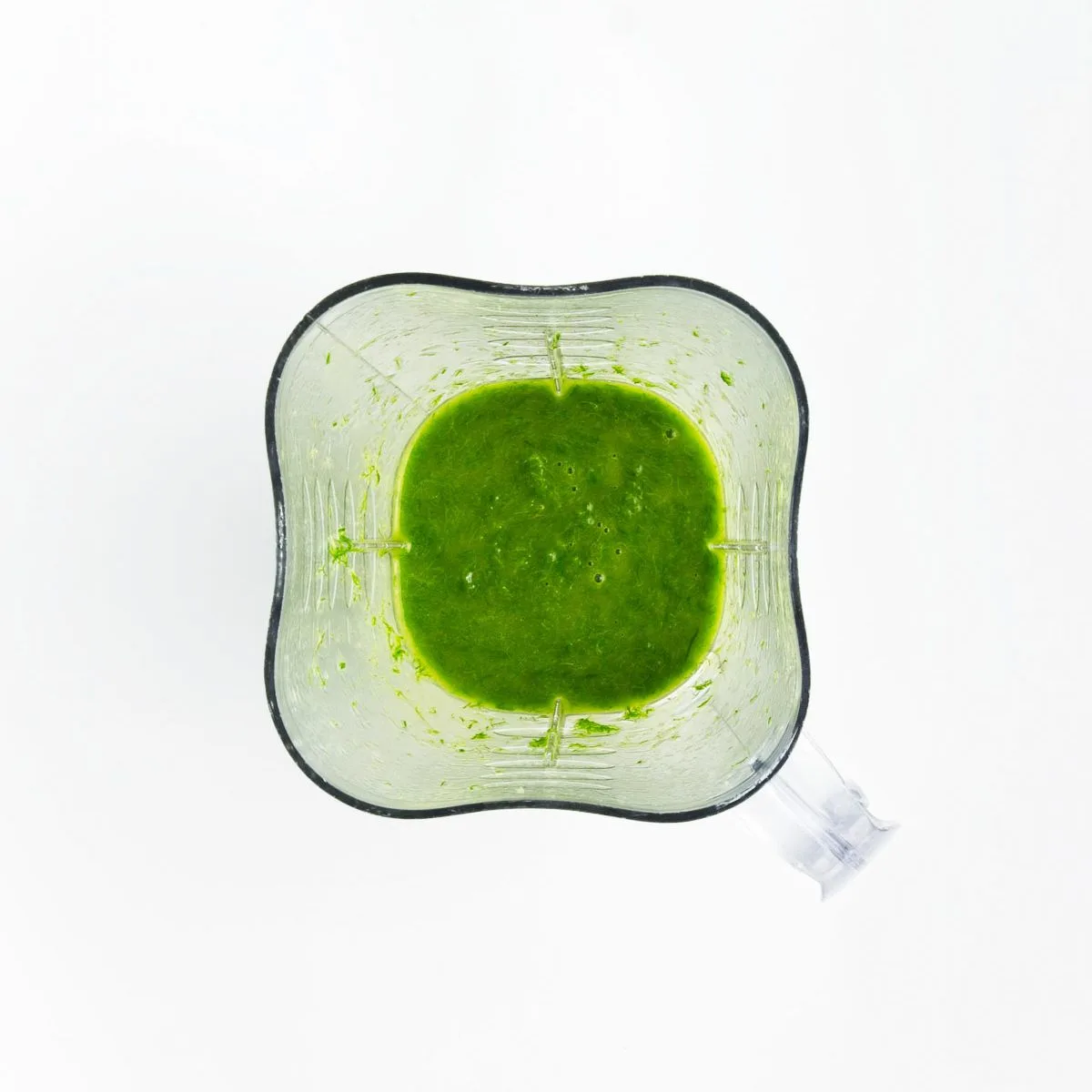
Allow to sit at room temperature for at least 90 minutes.
Strain though a very fine mesh strainer. This can be helped by straining through a larger strainer first and pressing out as much of the liquid as possible with a spatula or back of a spoon before pouring through a very fine mesh strainer. Do not press any foam through. Instead, allow to sit for 30 minutes to drain any remnants, moving the mixture around with a spoon if needed to let the oil get through.
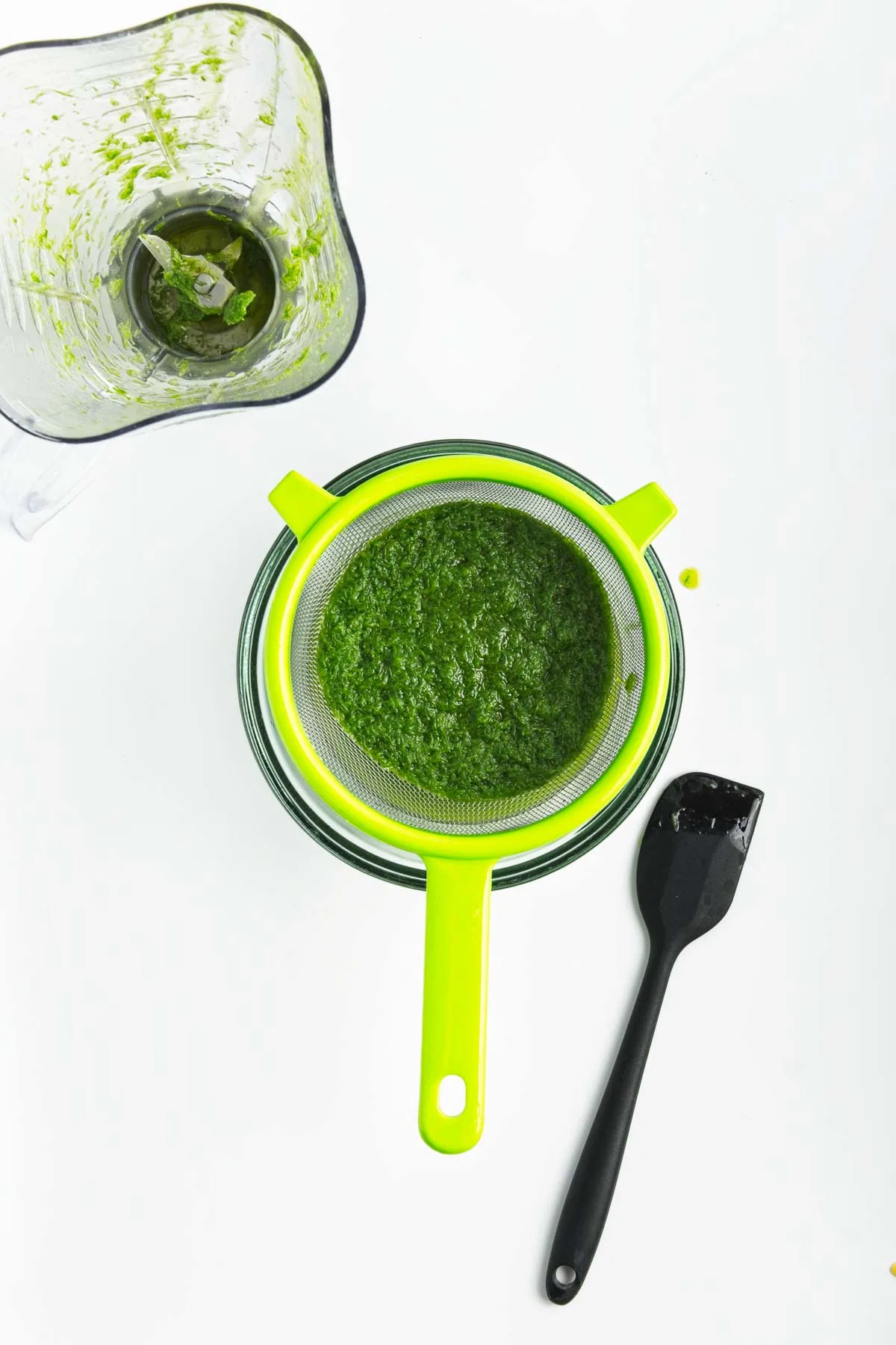
Your oil is ready to use, or see storage tips below.
How to store chive oil
Store chive oil in a closed glass jar, bottle, or container in the fridge for up to a week. It will solidify a bit in the fridge, so leave it at room temperature for a few minutes before serving.
If it looks like you won't finish the oil within a week, simple pour it into an ice cube tray and freeze it. Once frozen, transfer the cubes into a zip lock back and take out one or two at a time when you want some fresh chive flavor in your food. Frozen chive oil will keep for 1-3 months, depending on how well you can keep freezer burn out in your zip lock back.
If you enjoyed this recipe, let me know with a comment and a star rating below. And don't forget to share it on Facebook and save it on Pinterest for later!
Chive Oil
Ingredients
- 2 oz fresh chives - (about 3-4 small bunches if buying those fancy plastic-wrapped packages from the herb section of the store)
- 1 cup olive oil
- 3-4 cups water - (for blanching the chives)
- 1 teaspoon salt
Special equipment
- Small or medium saucepan to blanch the chives
- Ice bath to dunk the chives into after blanching them
- Colander to strain the blanched chives
- Wooden spoon or any other spoon or spatula - to stir the chives in the boiling water
- Paper towels or a clean kitchen towel to dry the chives
- Fine mesh strainer to strain the oil (or you can use a cheesecloth instead)
Instructions
- Rinse chives well. Optional: cut them in half or thirds to make them fit in a pot better.
- In a medium pot, bring 4 cups of water and 1 teaspoon salt to a boil. While the water is heating up, prepare your ice bath (get a bowl or ice and cold water) and get your colander ready.
- Add chives to the boiling water for 10 seconds, stirring immediately. Be careful not to overcook them!
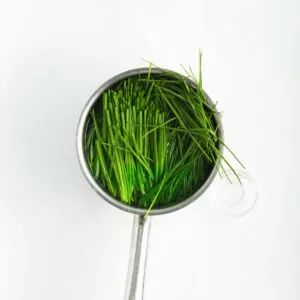
- Immediately drain the chives in a colander and plunge them into the ice bath.
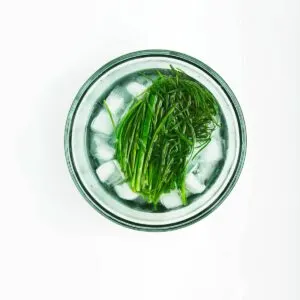
- Remove the chives from the water and gently squeeze to remove most of the water. Drain on paper towels and press further to remove as much water as possible. If you have time, let them sit out for a bit to air dry until they're not soaking wet.
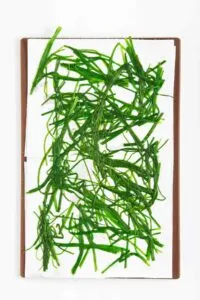
- Add the oil and chives to a blender (it can be helpful to chop up the chives into smaller pieces for less powerful blenders). Blend on medium speed until chives are starting to break up. Increase speed until chives are mostly pulverized.
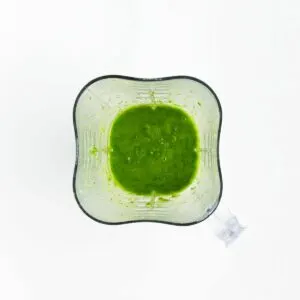
- Allow to sit at room temperature for at least 90 minutes.
- Strain though a very fine mesh strainer, catching the oil in a container. This can be helped by straining through a larger strainer first and pressing out as much of the liquid as possible with a spatula or back of a spoon before pouring through a very fine mesh strainer. Do not press any foam through. Instead, allow to sit for 30 minutes to drain any remnants, moving the mixture around with a spoon if needed to let the oil get through.
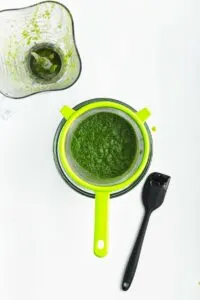
- Use immediately, or store in a sealed glass container in the fridge for up to 1 week. Bring to room temperature before using because the oil might solidify a bit in the fridge.
Nutrition
The nutritional information displayed is an estimate and not to be used as dietary or nutritional advice. Consult a nutritionist or dietician for nutritional info based on the exact ingredients you use.


